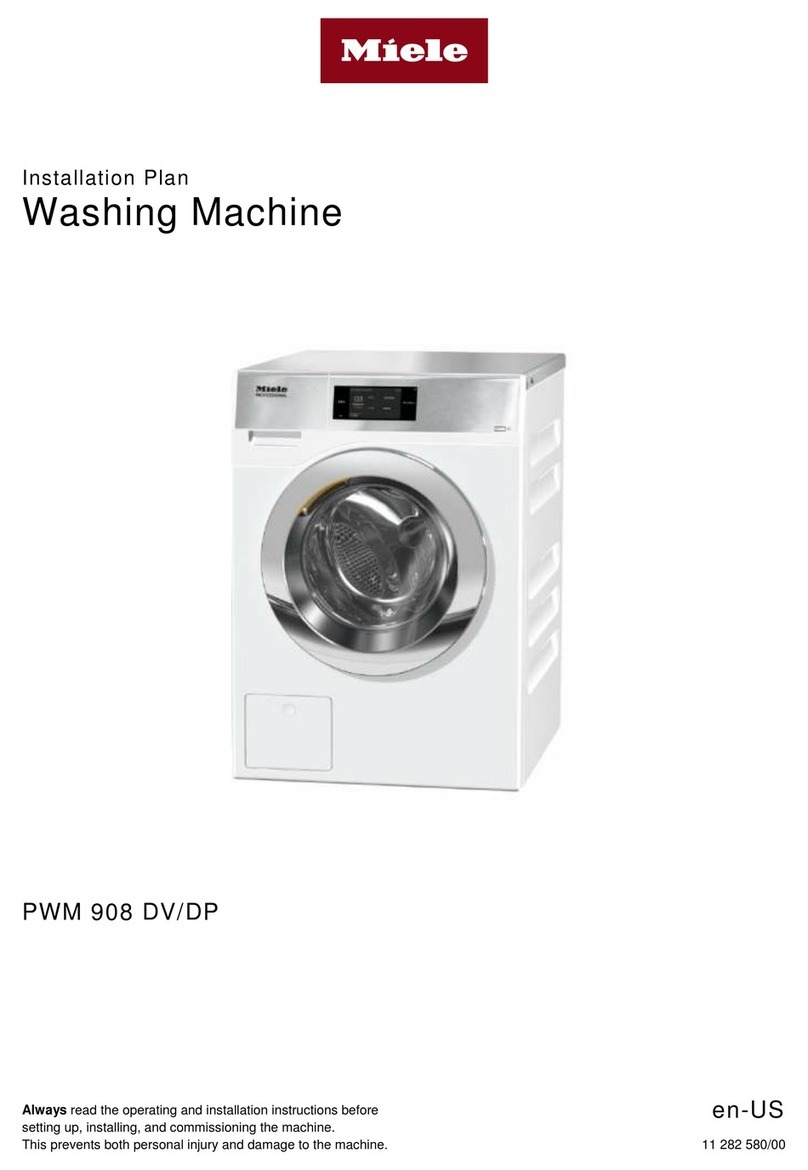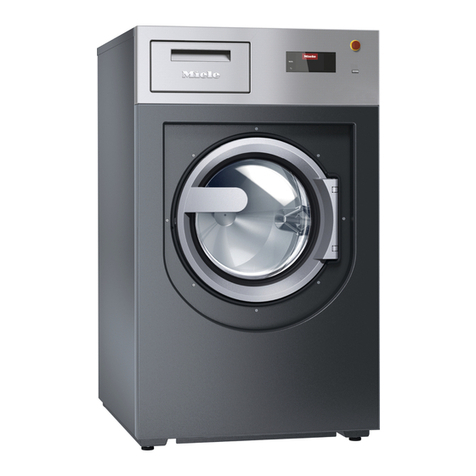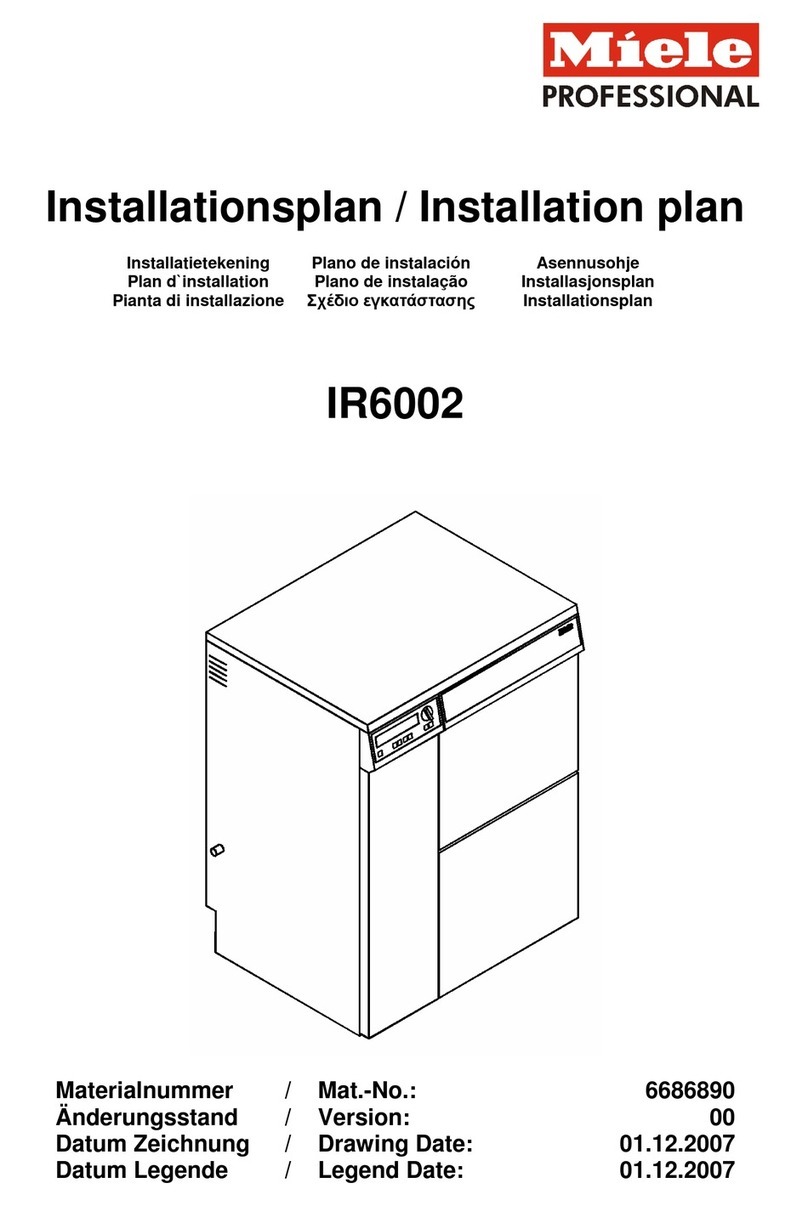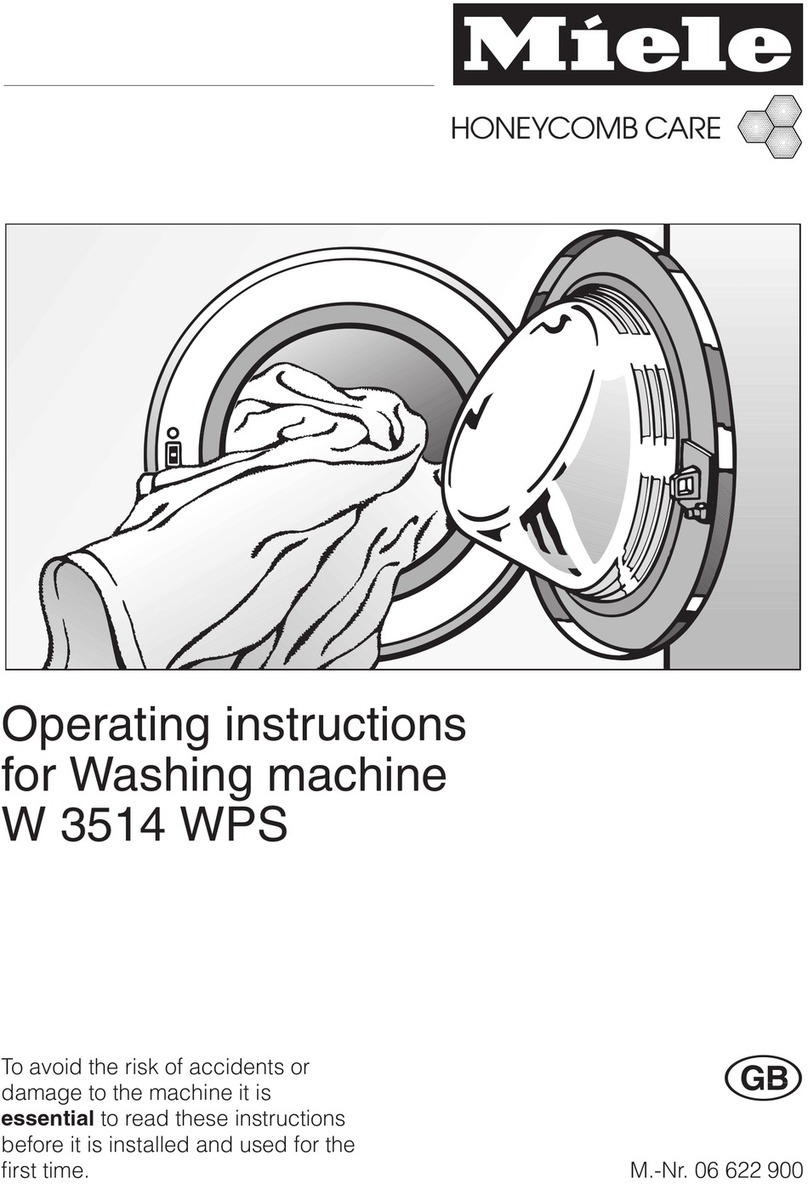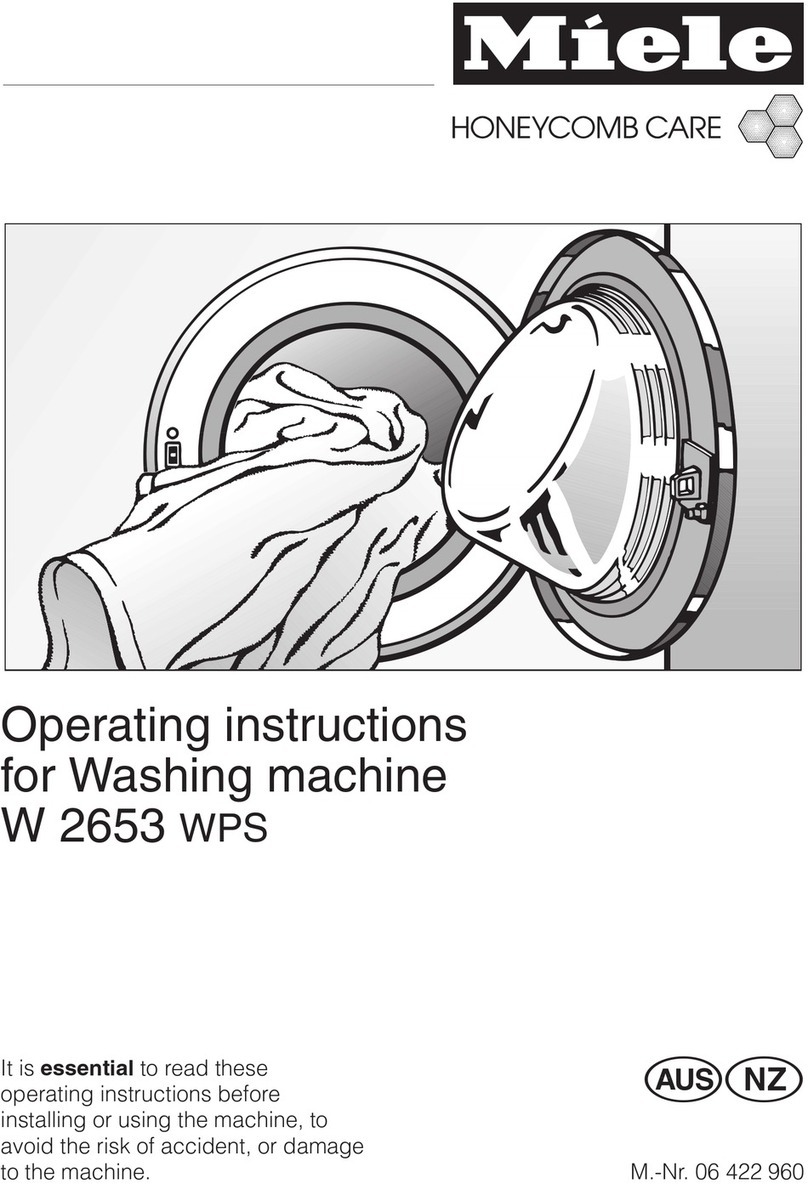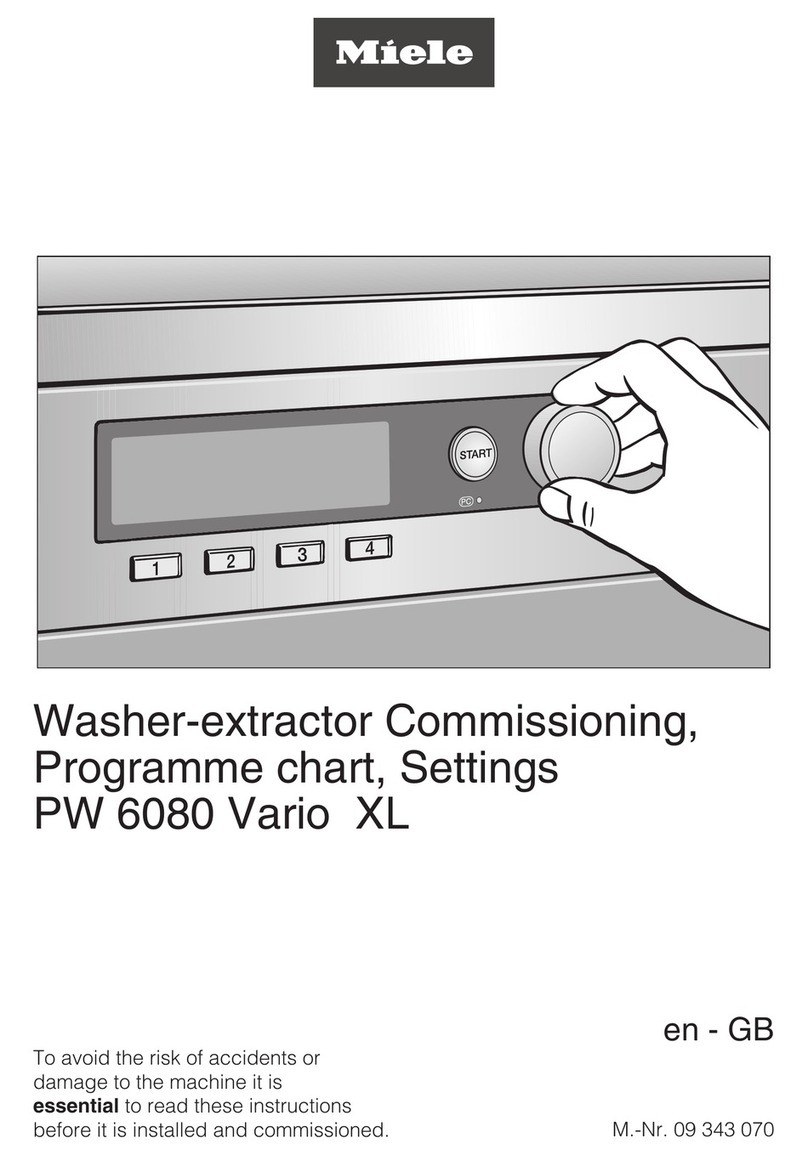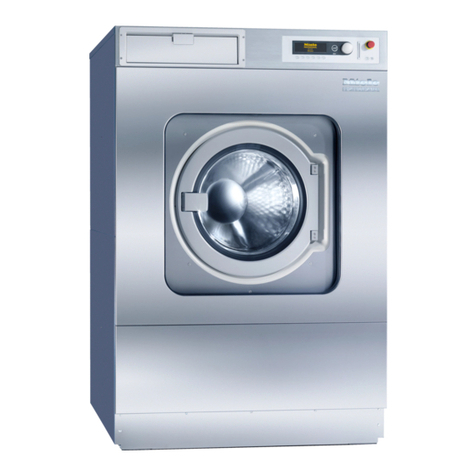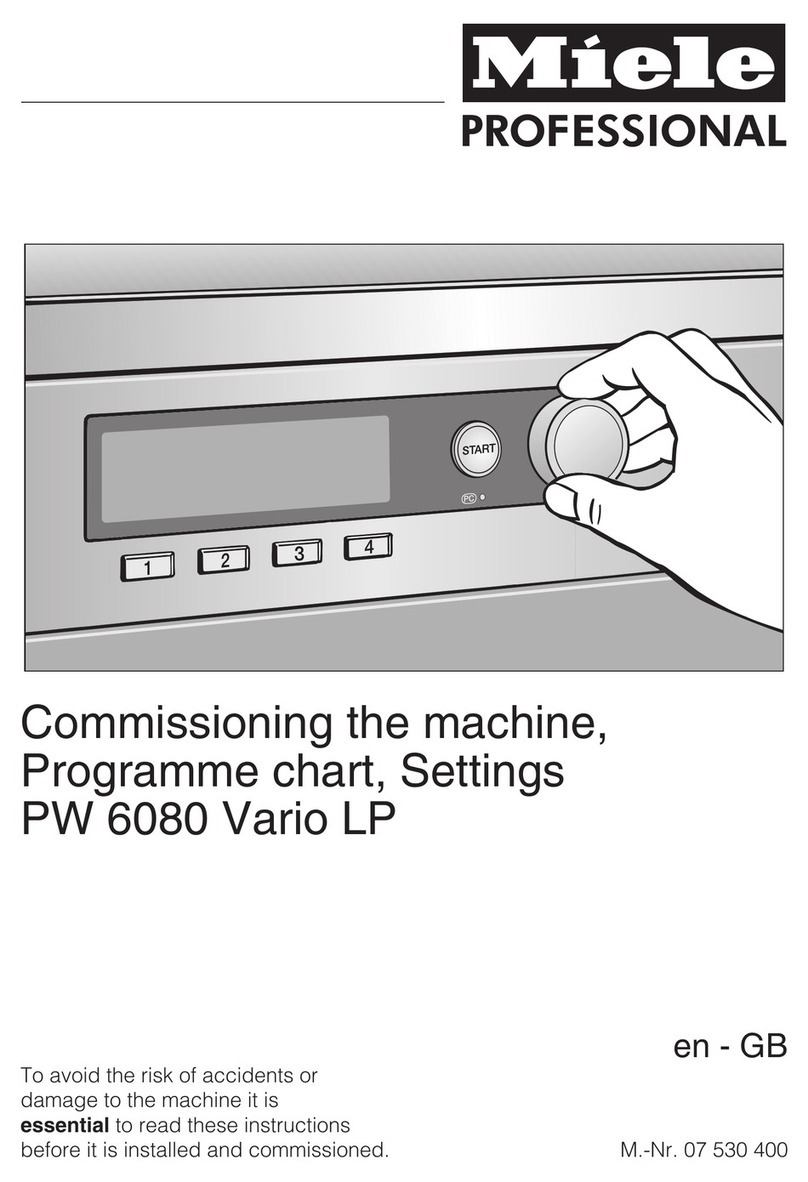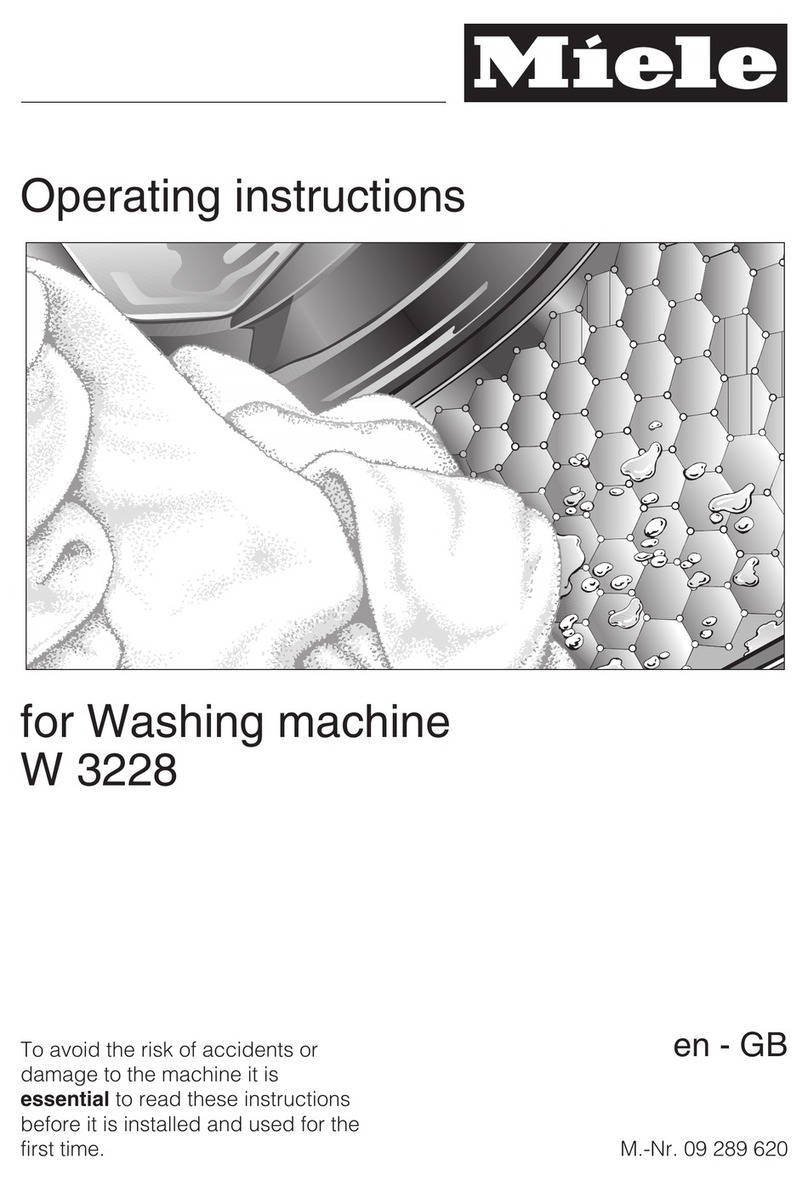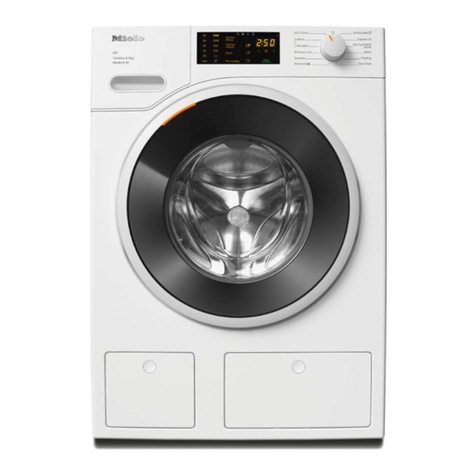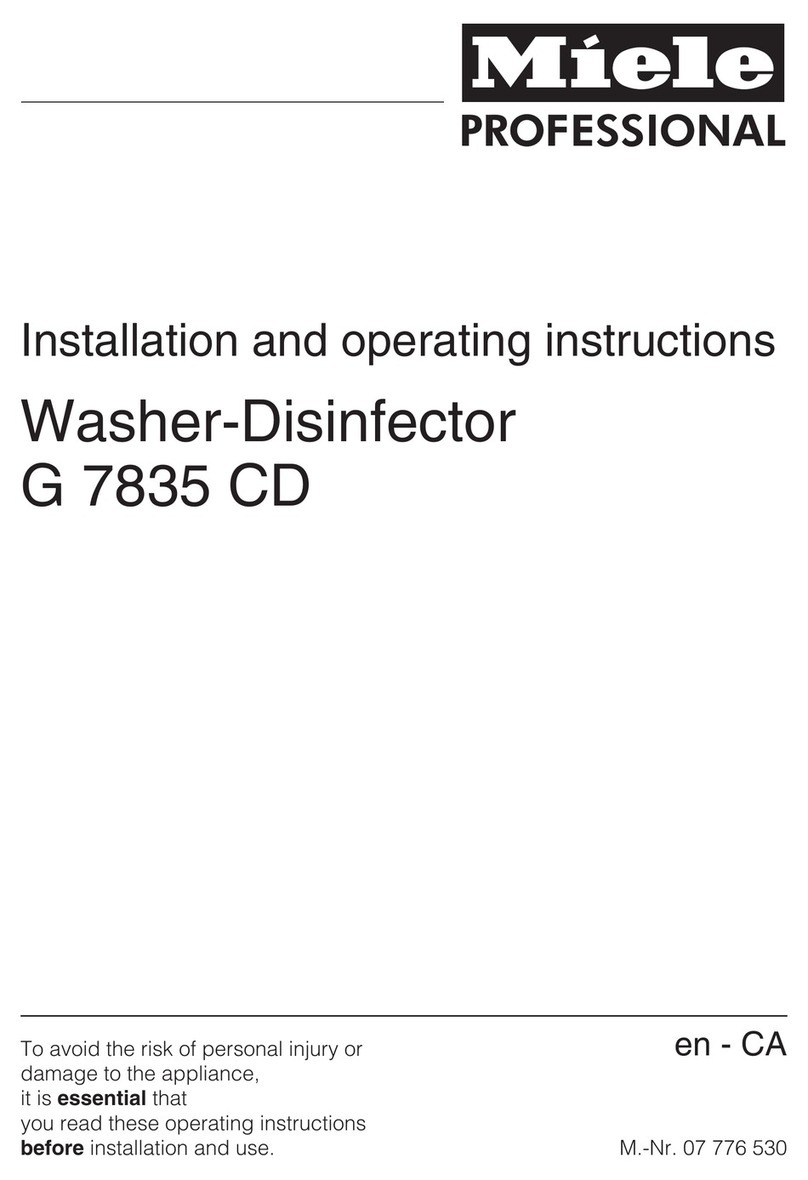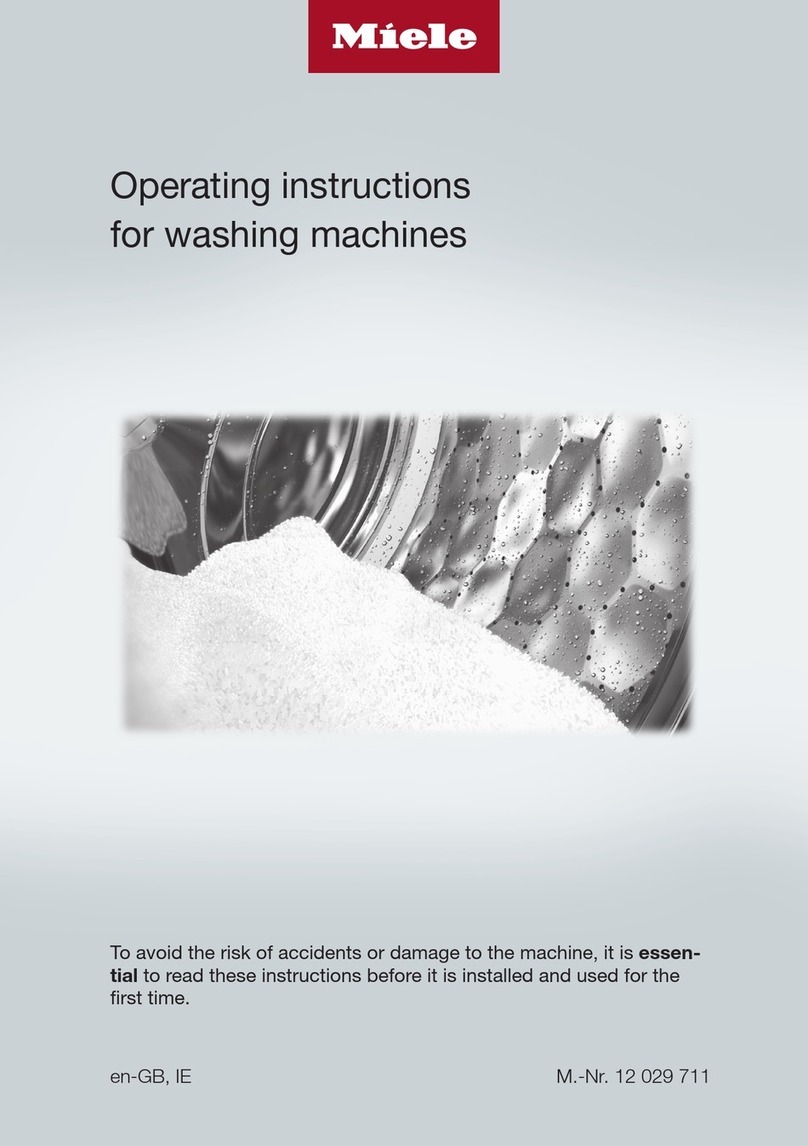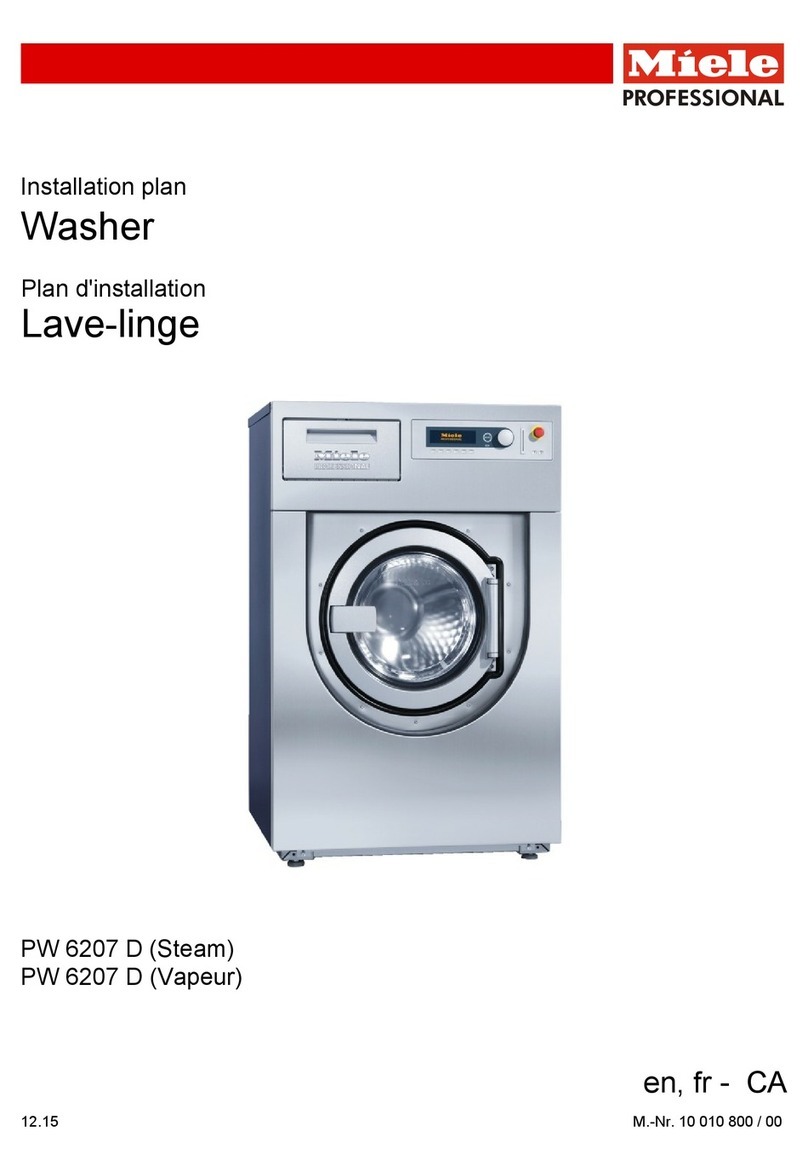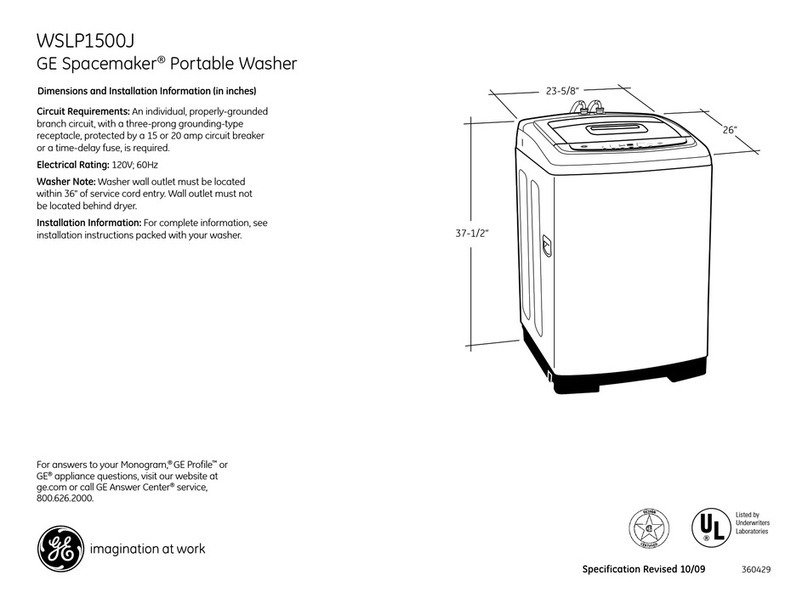
Contents
3
At the end of the programme ............................................................................................ 37
End of programme (removal on unclean side)............................................................... 37
End of programme (removal on clean side)................................................................... 37
End of programme (clean side without display) ............................................................ 37
Opening the top-hinged door at the end of the programme......................................... 37
Open drum .................................................................................................................... 37
Removing laundry and closing the drum ...................................................................... 38
Closing top-hinged door ............................................................................................... 39
Position the drum door on the clean side ..................................................................... 39
Finishing cancelled programmes ...................................................................................... 39
Switching off the washing machine .................................................................................. 40
Washing by card operation............................................................................................. 41
Wash with programme card .............................................................................................. 41
Rectifying a card error ....................................................................................................... 42
Laundry load operation ..................................................................................................... 42
Additional functions ........................................................................................................ 43
Temporarily changing the language .................................................................................. 43
Start time........................................................................................................................... 44
Cancelling the start time ............................................................................................... 44
With Pre-wash ................................................................................................................... 45
Without spin ...................................................................................................................... 46
Programme stop................................................................................................................ 46
Programme cancellation.................................................................................................... 47
Cancelling a locked programme........................................................................................ 47
Skipping a programme ...................................................................................................... 48
Optional modules (depending on country).................................................................... 49
Liquid dispensing ............................................................................................................. 49
Deselecting dispensing ................................................................................................. 49
Amount to be dispensed ............................................................................................... 50
Commissioning the dispenser pumps........................................................................... 50
Dispenser calibration..................................................................................................... 50
Cleaning and maintenance of the dispensing system................................................... 51
Peak load cut-out .............................................................................................................. 52
Communication module .................................................................................................... 52
Operating data................................................................................................................... 52
Total data........................................................................................................................... 53
Programme data................................................................................................................ 54
Delete data ........................................................................................................................ 55
Weighing system/Weighing plinth ..................................................................................... 56
Resetting the load display to zero................................................................................. 56
Sampling tap ..................................................................................................................... 58
Problem solving guide .................................................................................................... 60
Problem solving guide ....................................................................................................... 60
Fault messages in the display ........................................................................................... 63
Contact in case of fault ..................................................................................................... 65
Cleaning and care ........................................................................................................... 66
Cleaning the external casing and fascia panel.................................................................. 66
Cleaning the detergent drawers, detergent compartments and siphons.......................... 66



